This store requires javascript to be enabled for some features to work correctly.
-
BUY SEEDS
- Popular Warm Season Varieties
- Popular Cool Season Varieties
- Gift Card
- Garden and Seed Saving Supplies
- 2025 Seedlisting
- Monsoon Collection
- Amaranth
- Arugula
- Beans
- Beets
- Broccoli
- Brussels Sprouts
- Cabbage
- Carrots
- Chiles/Peppers
- Chiltepines (Wild Chiles)
- Corn
- Cotton
- Cowpeas/Black-Eyed Peas
- Cucumbers
- Devil's Claw
- Eggplant
- Gourds
- Greens - Cool Season
- Greens - Warm Season
- Herbs
- Kale
- Lettuce
- Luffa
- Melons
- Mustards
- Okra
- Onions and Garlic
- Panic Grass
- Parsnips
- Peas
- Radishes
- Sesame
- Sorghum
- Squash
- Sunflowers
- Swiss Chard
- Tobacco
- Tomatillos
- Tomatoes
- Turnips
- Watermelons
- Wheat
- Wildflowers
- Crop Wild Relatives
-
BUY SEEDS
- Popular Warm Season Varieties
- Popular Cool Season Varieties
- Gift Card
- Garden and Seed Saving Supplies
- 2025 Seedlisting
- Monsoon Collection
- Amaranth
- Arugula
- Beans
- Beets
- Broccoli
- Brussels Sprouts
- Cabbage
- Carrots
- Chiles/Peppers
- Chiltepines (Wild Chiles)
- Corn
- Cotton
- Cowpeas/Black-Eyed Peas
- Cucumbers
- Devil's Claw
- Eggplant
- Gourds
- Greens - Cool Season
- Greens - Warm Season
- Herbs
- Kale
- Lettuce
- Luffa
- Melons
- Mustards
- Okra
- Onions and Garlic
- Panic Grass
- Parsnips
- Peas
- Radishes
- Sesame
- Sorghum
- Squash
- Sunflowers
- Swiss Chard
- Tobacco
- Tomatillos
- Tomatoes
- Turnips
- Watermelons
- Wheat
- Wildflowers
- Crop Wild Relatives
-
BUY SEEDS
- Popular Warm Season Varieties
- Popular Cool Season Varieties
- Gift Card
- Garden and Seed Saving Supplies
- 2025 Seedlisting
- Monsoon Collection
- Amaranth
- Arugula
- Beans
- Beets
- Broccoli
- Brussels Sprouts
- Cabbage
- Carrots
- Chiles/Peppers
- Chiltepines (Wild Chiles)
- Corn
- Cotton
- Cowpeas/Black-Eyed Peas
- Cucumbers
- Devil's Claw
- Eggplant
- Gourds
- Greens - Cool Season
- Greens - Warm Season
- Herbs
- Kale
- Lettuce
- Luffa
- Melons
- Mustards
- Okra
- Onions and Garlic
- Panic Grass
- Parsnips
- Peas
- Radishes
- Sesame
- Sorghum
- Squash
- Sunflowers
- Swiss Chard
- Tobacco
- Tomatillos
- Tomatoes
- Turnips
- Watermelons
- Wheat
- Wildflowers
- Crop Wild Relatives
Conserve a Crop
As we face ever increasing drought and higher temperatures, protecting arid-adapted seeds is more urgent than ever. These resilient, heirloom seeds produce healthy food and thrive in our dry, desert climate.
Your gift of $35, or more, will ensure these seeds are grown, saved, and shared with gardeners and farmers throughout the Southwest.
Help conserve these threatened crop seeds so they are available in our gardens, on our plates, and for future generations.
Protect one of these arid-adapted crops today!
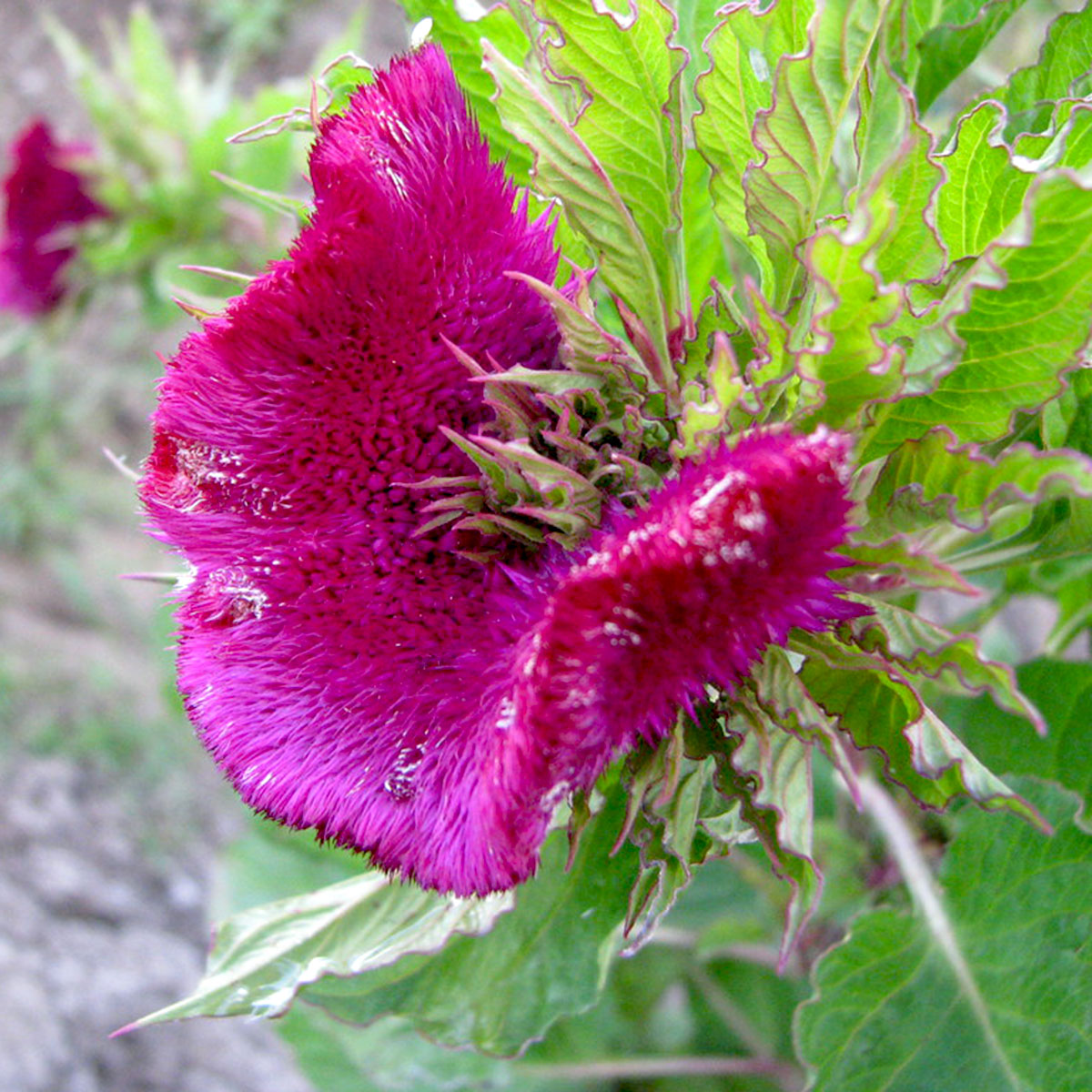
Mano de Gato
Named for its soft, paw-like flower heads, this eye-catching plant has edible leaves and seeds that are packed with nutrients.
Their bright flowers are one of the traditional types used in Day of the Dead ofrendas.
Mano de Gato does well in desert heat and alkaline soil, making it an ideal crop for our low desert climate.
Unavailable since 2021, these seeds are now being grown at our Conservation Center in Tucson. With a successful harvest, we hope to offer them again soon!
Named for its soft, paw-like flower heads, this eye-catching plant has edible leaves and seeds that are packed with nutrients.
Their bright flowers are one of the traditional types used in Day of the Dead ofrendas.
Mano de Gato does well in desert heat and alkaline soil, making it an ideal crop for our low desert climate.
Unavailable since 2021, these seeds are now being grown at our Conservation Center in Tucson. With a successful harvest, we hope to offer them again soon!
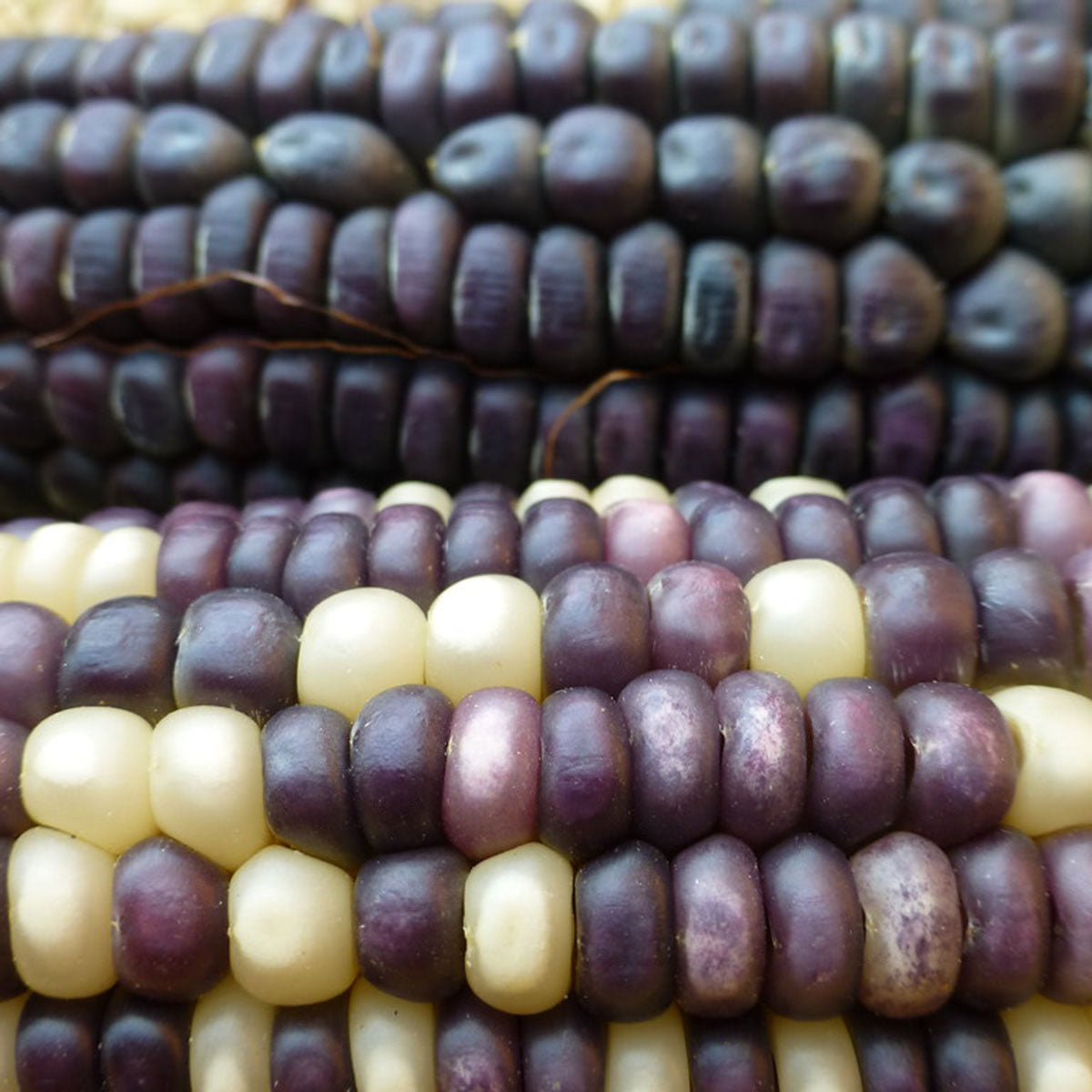
Ocholi Sunu (Guarijío Blue Corn)
This striking blue corn was collected in 1981 from Sonora, Mexico. Unlike most blue corn, which grows at higher elevations, this variety is adapted to the low desert region.
Known for its drought tolerance and deep, earthy flavor it is often ground into richly colored tortillas or pinole.
Now growing at our Conservation Center in Tucson, it plays a vital role in preserving crop diversity adapted to arid environments.
This striking blue corn was collected in 1981 from Sonora, Mexico. Unlike most blue corn, which grows at higher elevations, this variety is adapted to the low desert region.
Known for its drought tolerance and deep, earthy flavor it is often ground into richly colored tortillas or pinole.
Now growing at our Conservation Center in Tucson, it plays a vital role in preserving crop diversity adapted to arid environments.
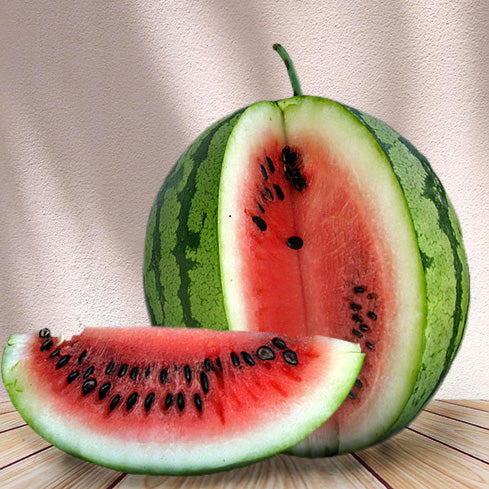
Mayo Sandia (Watermelon)
Traditionally dry-farmed by Mayo farmers in Sonora, Mexico, this small, sweet melon is perfectly adapted to desert life.
Often planted with monsoon rains in late June and early July, it has produced fruit on rainfall alone!
Partner farmer Hannah Hendryk is growing this resilient, drought-tolerant melon at Tohono Chul park in Tucson, AZ.
Added to our seedbank in 1990, it's being grown for the first time since 2002. This grow-out will increase seed supply for the public.
Traditionally dry-farmed by Mayo farmers in Sonora, Mexico, this small, sweet melon is perfectly adapted to desert life.
Often planted with monsoon rains in late June and early July, it has produced fruit on rainfall alone!
Partner farmer Hannah Hendryk is growing this resilient, drought-tolerant melon at Tohono Chul park in Tucson, AZ.
Added to our seedbank in 1990, it's being grown for the first time since 2002. This grow-out will increase seed supply for the public.
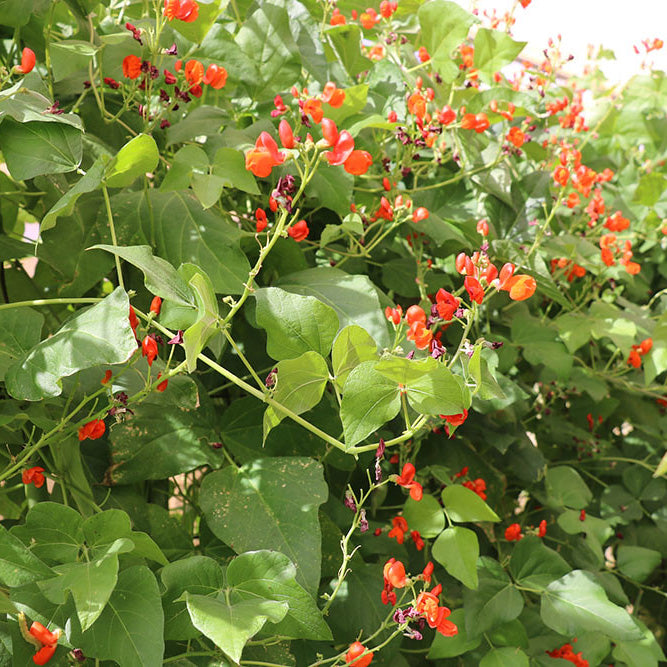
Four Corners Scarlet Runner Bean
Collected in Canyon de Chelly in 1988, this Scarlet Runner is being grown again on the Navajo Nation by an NS/S partner farmer.
This high-elevation black and purple bean has vibrant flowers that attract hummingbirds.
The big, beautiful beans can be cooked like green beans or dried for soups, making them a versatile addition to traditional dishes.
Bringing this bean back to Navajo land helps keep traditional foodways and seed knowledge alive and makes more seed available.
Collected in Canyon de Chelly in 1988, this Scarlet Runner is being grown again on the Navajo Nation by an NS/S partner farmer.
This high-elevation black and purple bean has vibrant flowers that attract hummingbirds.
The big, beautiful beans can be cooked like green beans or dried for soups, making them a versatile addition to traditional dishes.
Bringing this bean back to Navajo land helps keep traditional foodways and seed knowledge alive and makes more seed available.
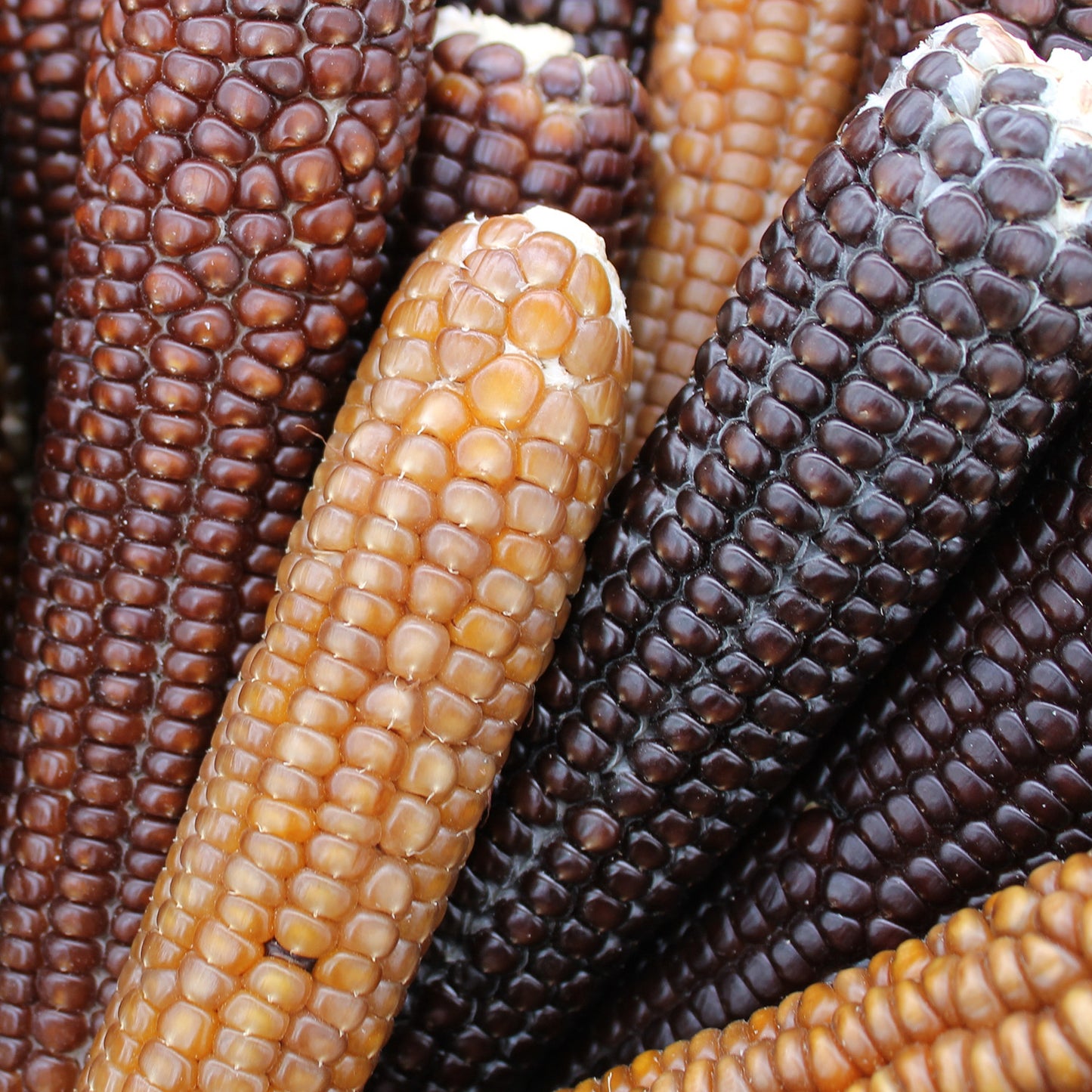
Chapalote Corn
One of the oldest known corns, Chapalote has been cultivated for over 6,700 years. Originally grown from southern Arizona to Sinaloa, it was collected from a Mayo farmer in El Fuerte in 1999.
This low desert corn has small, hard, flinty kernels and can be ground into cornmeal and makes a sweet pinole. It can also be popped!
Our partners at Mission Garden are growing this historic variety to help increase both their supply and ours, and to make it available for distribution once again.
One of the oldest known corns, Chapalote has been cultivated for over 6,700 years. Originally grown from southern Arizona to Sinaloa, it was collected from a Mayo farmer in El Fuerte in 1999.
This low desert corn has small, hard, flinty kernels and can be ground into cornmeal and makes a sweet pinole. It can also be popped!
Our partners at Mission Garden are growing this historic variety to help increase both their supply and ours, and to make it available for distribution once again.

